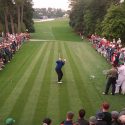 What’s next for Rory McIlroy? This golf-crazed NBA champion has thoughts
What’s next for Rory McIlroy? This golf-crazed NBA champion has thoughts
Rory McIlroy explains why he doesn’t like looking at his own golf swing on video

There are many different schools of thought when it comes to how to improve your golf game. Some players need to analyze loads of data and biomechanics – like Bryson DeChambeau – while others get the most out of their game taking a more feel-based approach.
It appears that Rory McIlroy is trending toward the latter method. On Mark Immelman’s podcast “On the Mark,” Immelman cites a McIlroy quote from the offseason clarifying his stance on the data vs. feel debate.
“I’ve actually tried to get away from all of that stuff,” McIlroy said about data and biomechanics. “I’m trying to play a lot more by feel; even reluctant to see my swing on video these days. I’ve done all of that stuff before. I’ve been to the biomechanics and I’ve done the 3-D stuff. It’s all good and it helps, but I think at this stage of my career, I know what works for me.”
ADVERTISEMENT
It’s hard to argue with McIlroy’s process these days. He’s coming off a three-win season, adding 14 top 10s and Player of the Year honors from the PGA Tour. His feel-based stance is consistent with what he said earlier this month when he said he didn’t use a line on the ball to line up his putts.
“Anytime I use the line, I struggle with my speed,” McIlroy said. “I’m so into what I’m doing here, that I lose connection with the target.”
As long as the ball is being struck in the center of the clubface, there is no need to make drastic changes, according to Immelman. The ball can be well struck and still miss the intended target line because of alignment, clubface angle or any number of other reasons.
“If you’re hitting it flush, you’re ok,” Immelman said. “Currently No. 2 ranked golfer in the world, he said so. You need to apply that to your own game.”
Immelman goes on to explain that it is easy to fall in love with the numbers and data associated with your swing, but that can be detrimental. A healthy dose of data is good, but the important thing is taking that data and converting it into a tactile sensation.
“Instead of chasing data, go for your feels,” Immelman said. “If you don’t know what your feels are, start to look at the data … It’s up to you the student and it’s up to you the player to get in touch with what your feels are.”
Being able to get in tune with these sensations and feels is key to making adjustment mid round when technology and other aids are not available.
When it comes to data vs. feel, there isn’t necessarily a right or wrong answer. The important thing is not leaning on one or the other too hard and allowing the two to be complementary in your swing.
To receive GOLF’s all-new newsletters, subscribe for free here.
ADVERTISEMENT








